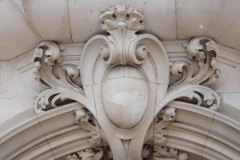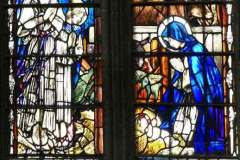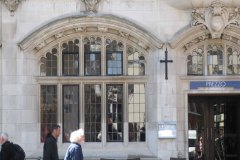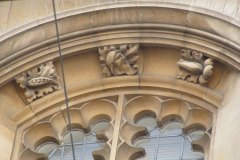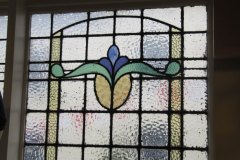Period
At its peak 1890 to WW1
Description
Art Nouveau as an international style found reflections in a wide range of art forms: architecture, painting, sculpture, jewellery, metalwork, glass and ceramics. It is characterised by use of a long, sinuous, asymmetrical, organic lines that follow those visible in nature eg flowers and insects. Some regard it as a reaction against the industrial revolution, mass production, and mechanised production. In its architectural expression, it blurred the line between structural and ornamental.
Unlike some world cities (Brussels, Barcelona, Nancy), Canterbury cannot really claim to have examples of Art Nouveau buildings, just a few hints at Art Nouveau features here and there. The first three images below relate to the former post office building 28 High Street (Prezzos); the 4th is the upper floor of Debenhams in Guildhall Street.
Features
Look out for sinuous wavy lines and flower motif in coloured glass.
Some art is hard to classify. The final image below (stained-glass nativity scene in the Cathedral by Christopher Whall) can hardly be classified as Domestic, but has been included to reflect the opinion of Francis Woodman ‘The style retains vestiges of the Arts and Crafts movement while expressing more than a passing interest in Art Nouveau’ (The Architectural History of Canterbury Cathedral (1981)).

